The Best Fluffy Pancakes recipe you will fall in love with. Full of tips and tricks to help you make the best pancakes.
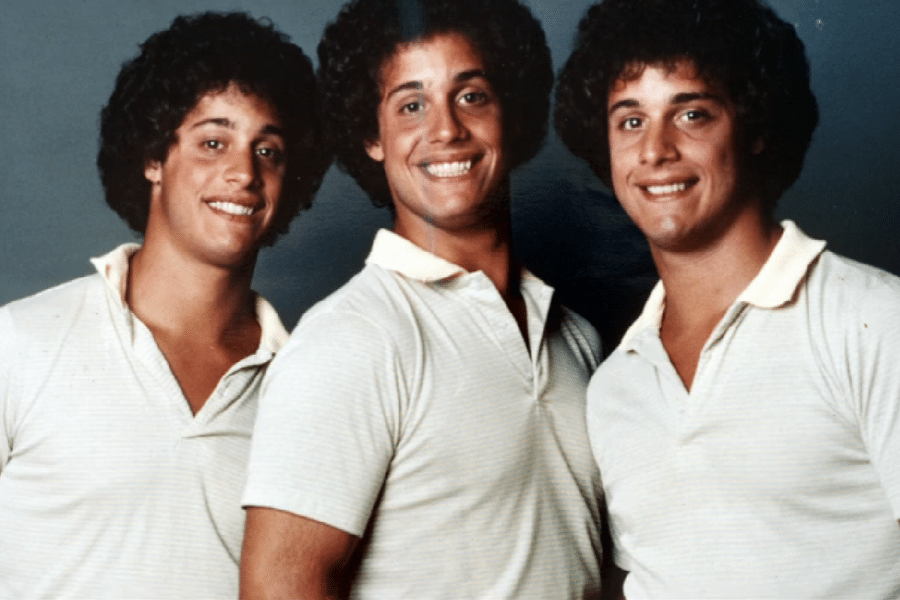
Maurice Shirley
Published June 13, 2025
It was the kind of story that seemed too heartwarming to be real. Three teenage boys, in 1980s New York, discovered by chance that they were identical triplets. Same face, same birthday, same story. Separated at birth and raised by different families, their unexpected reunion made headlines and charmed the entire nation. But behind the heartwarming twist was a disturbing truth. What started as a feel-good miracle unraveled into a dark scandal of manipulation, unanswered questions, and a chilling secret no one was ever supposed to uncover.
A Strange Welcome

In September 1980, 19-year-old Robert Shafran arrived at Sullivan County Community College expecting nothing more than a quiet first day. But people kept greeting him like a returning friend.
A girl ran up and kissed his cheek. “Welcome back, Eddy!” she said. Another student slapped his back, laughing. “You’re back!” Robert smiled politely, but confusion settled deep inside.
Everyone kept calling him “Eddy.” But Robert wasn’t Eddy—he’d never even been on campus before. Something was off, unsettling, and impossible to explain. He was being mistaken for someone else.
Edward Galland’s Shadow

Later that day, a student named Michael Domnitz stared at him. “You look exactly like my old roommate, Eddy Galland,” he said. “It’s freaky. Spitting image.”
Robert tried brushing it off, but Michael wouldn’t let it go. “Were you adopted?” he asked. “Is your birthday July 12, 1961?” When Robert said yes, Michael turned pale.
“This is crazy,” Michael muttered. “You need to meet him.” He insisted they drive to his place immediately. “I’m telling you, man. You look like the exact same person.”
Advertisement
Two Strangers. One Life

As they drove, Michael explained everything. Eddy Galland had dropped out months ago. He was Robert’s height, had the same curly hair, the same birthday, and even the same laugh.
Robert laughed nervously, still unsure. But the facts lined up—same age, both adopted, both placed through the Louise Wise Services adoption agency. The coincidences were piling up fast.
They couldn’t ignore it. They pulled into a convenience store and stopped at a payphone. Michael dialed. “Eddy? I have someone with me. You need to talk to him—now.”
The Voice on the Line

Michael handed the phone to Robert. “Hi,” he said, unsure. “Were you born on July 12, 1961?” The voice on the other end went silent for a beat.
“Yes,” the man replied. It was Edward Galland. “Were you adopted?” Robert asked. “Yeah,” came the reply. Robert’s knees wobbled. He looked at Michael and whispered, “I think we’re twins.”
Neither of them knew what to say. “Where are you?” Robert finally asked. “I need to see you.” Eddy didn’t hesitate. “Come to Long Island,” he said. “Let’s find out.”
Advertisement
A Speeding Ticket to Truth

They jumped in the car and took off. Michael sped down the highway, adrenaline pushing the gas pedal. “We’re going to meet your twin,” he said. “Your actual twin.”
Blue lights flashed. Pulled over by the officer with a “you better have good reasons” look in his eyes, Michael blurted everything. “They were separated at birth!” The officer stared at Robert, then waved them through. “Go,” he said. “Go find him.”
They reached Eddy’s house in New Hyde Park. The door opened. Eddy stepped out, wide-eyed. Michael later said, “It was like watching two versions of the same person meet.”
The First Embrace

Robert and Eddy circled each other slowly, eyes scanning for differences. There weren’t many. Same hair. Same walk. Same grin. It was like looking into a living mirror.
They stood silently for a second longer, then lunged forward into a hug. Tight. Unspoken. “It’s like I’ve always known you,” Robert said. Their connection was immediate, electric.
That night, they compared everything—birthmarks, food, mannerisms, favorite sports. It all matched. But as they laughed together for the first time, none of them knew a third echo existed.
Advertisement
The Third Brother

Alan Luchs, David’s friend from Queens, saw the newspaper headline—a copy of Robert and Eddy grinning side by side is worldwide! He stared. “They look just like David,” he said. “It’s not just the face—it’s the hands.”
David Kellman had those same thick, broad hands—like baseball mitts. “No one else has hands like that,” Allan said. “Except David.” He rushed to him immediately.
“David,” Allan said breathlessly, waving the paper, “you need to see this. It’s urgent.” David took the newspaper from his friend, unknowingly holding the next twist in their impossible story.
David’s Discovery

David stared at the front page. Two identical strangers, beaming. “They could be my twins,” he whispered, eyes fixed. He studied their faces like a mirror he’d never seen.
It wasn’t just the smiles. It was their posture, the way they leaned, the shape of their jaws. “That’s me,” he muttered. “Even the way they stand.”
He didn’t hesitate. He picked up the phone and called the Gallands. “My name is David Kellman,” he said. “I think I’m your son’s brother. I think I’m the…third.”
Advertisement
The Mother’s Realization

He raced home with the newspaper clutched to his chest and burst into the kitchen. “Did you see this?” he asked, out of breath. His mother turned and gasped.
“Did you see this?” she repeated. They both stood frozen, exchanging newspapers and staring at the headline. Robert and Eddy were smiling in black and white, their eyes unmistakably familiar.
“They look just like you,” she whispered, slowly sitting down. David nodded, his voice low and certain. “I think they are me,” he said. “And I think I found them.”
Three Become One

David stepped out of the car at the Galland home. Robert and Eddy stood on the porch. For a moment, time seemed to stall, breath held between seconds.
“Holy shit,” Robert whispered. David approached, and the three of them embraced tightly, laughing, crying, gasping. “We’re triplets,” David said. “I can feel it. I don’t know how—but I know.”
They looked alike. They moved in sync. They laughed at the same jokes. “It was like meeting yourself but twice,” Robert recalled. But none of them realized: this was only the beginning.
Advertisement
Instant Stars

The world couldn’t look away. The New York Post headline screamed: “Triplets Reunited After 19 Years.” Television crews came next. Everyone wanted to see the three boys with one face.
They wore matching clothes. Appeared on morning shows. Finished each other’s sentences. “It was like watching one brain in three bodies,” one producer said. America was enthralled.
David remembered it vividly. “We felt like celebrities overnight,” he said. But beneath the matching grins, one silent question haunted them all: Why had they ever been separated?
Eddy’s Quiet Alarm

As the triplets smiled through interviews and commercial shoots, Eddy began to withdraw. “I don’t know if this is going to be great or terrible,” he whispered to a friend.
He played the part but remained watchful. “He smiled like us,” David said. “But you could tell—he was thinking. He was weighing things. He was worried.”
Robert noticed it, too. “Eddy had this radar,” he said. “He’d stop smiling and say, ‘This doesn’t feel real.’” But no one yet understood how right he might be.
Advertisement
Bubala’s House

The triplets moved into David’s family home in Queens and were welcomed like long-lost sons. His father, Richard Kellman, smiled warmly and said, “Call me Bubala,” a Yiddish term for love and protection.
They stayed up late swapping stories, cracking jokes, and trying to fill the 19-year gap. “Do you think our birth mother knew?” Robert asked one night quietly.
Eddy’s face turned serious. “Do you think she gave us up together?” David looked down. “They never told our parents,” he said. “The agency chose to keep that hidden.”
The Parents Demand Truth

Their adoptive parents were outraged. “We were lied to,” said Richard. “We were robbed of knowing each other—robbed of raising them together from day one.”
They demanded answers from Louise Wise Services. Soon after, a meeting was arranged. In a boardroom, tense and sterile, the parents sat across from the agency’s senior staff.
“Is it true you separated them at birth?” one mother asked. The room went still. “Yes,” came the answer. Cold. Final. “It was part of a placement policy.” Atmosphere brewed in tension.
Advertisement
A Chilling Justification

The agency defended itself. “Triplets are hard to place,” one executive said. “Most families won’t take three. It was done for their own good.” The parents were stunned.
Richard Kellman’s voice cracked with rage. “We would’ve taken all three—no hesitation!” He slammed the table. “You don’t get to decide what’s too much family. That’s not your right.”
There were no apologies. No remorse. Just policies, forms, and most importantly, vague explanations. The meeting ended in silence—until one of the parents realized he had left his umbrella in the boardroom.
Behind Closed Doors
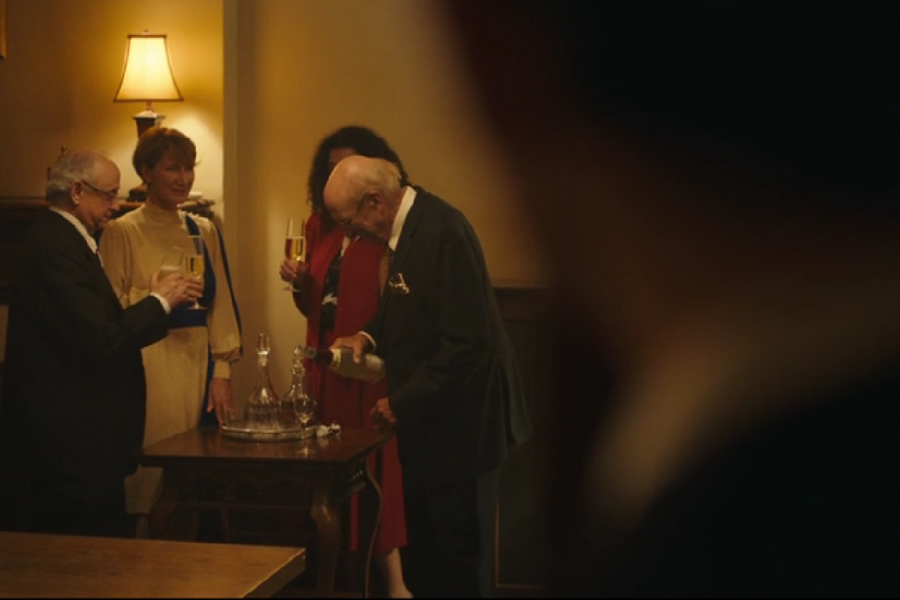
Mort Shafran, Robert’s dad, returned to the lobby. As he passed the boardroom, he looked through the glass. Inside, the executives were laughing. Champagne glasses clinked. Faces relaxed in celebration.
“They were celebrating,” he later recalled. “Like they dodged a bullet. Like we were the problem, not what they did.” He stood there, frozen. Then, quietly walked away.
The image burned in his mind. “It was betrayal on top of betrayal,” he said. That moment transformed heartbreak into fury. The families weren’t just grieving—they were ready for war!
Advertisement
Doors Slammed Shut

The families approached top law firms across New York. “We want justice,” they said. The lawyers listened, shocked by the story. “This could be huge,” one initially promised.
But within days, each firm backed out. “We’re sorry,” they said. “There’s a conflict.” Many were trying to adopt through Louise Wise. No one wanted to jeopardize relationships.
“We were shut out,” David’s mother said. “One door after another.” It became clear: the system wasn’t designed to protect victims—it was designed to protect institutions from exposure. On the other hand…
Living Loud
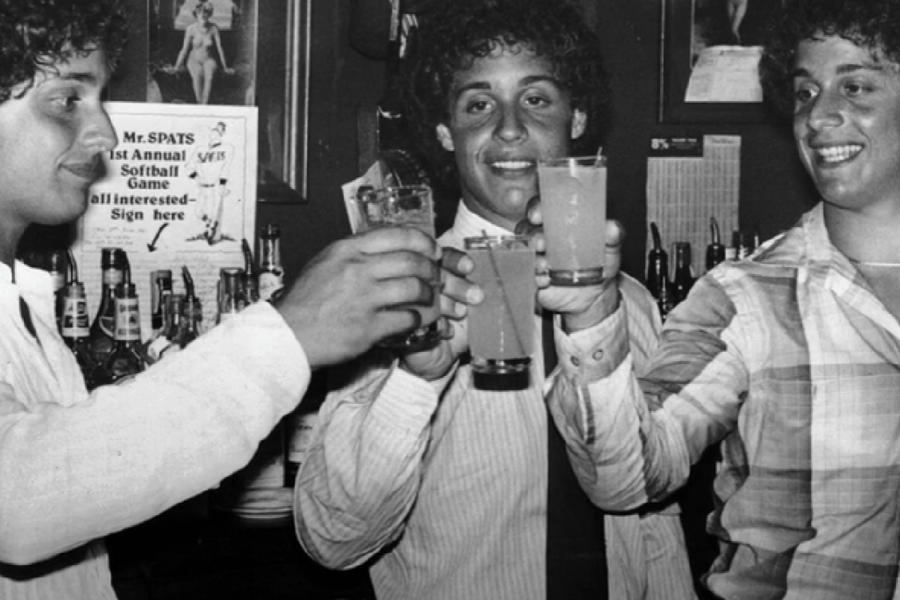
While the parents battled bureaucracy, the triplets leaned into the limelight. “New York became our playground,” Robert said. “We were young, famous, and unstoppable. We made up for lost time.”
They partied at nightclubs, landed magazine covers, and dated models. “It felt like we were one person multiplied,” David said. “Finally living on our own terms.”
But the fame was a double-edged sword. One morning, David’s mother tossed the Post across the table. “I gotta read the paper to know where you were last night?!” They left their parents fight the battle alone, and that hit David.
Advertisement
The Search for Her
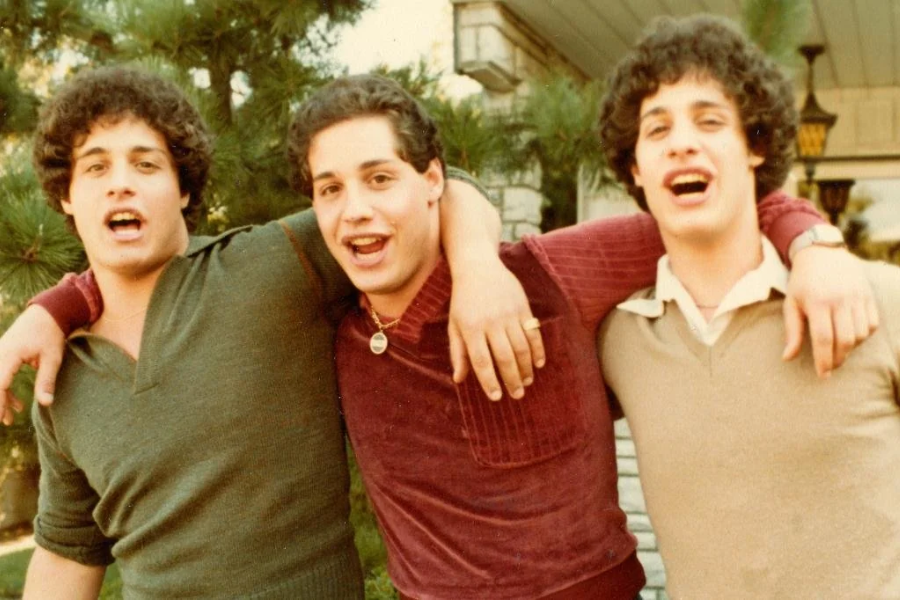
Their friend Allan Luchs urged the triplets to go deeper. “You found each other,” he said. “Now find her—the beginning. Find your birth mother. It’s time.”
They went to the New York Public Library. Flipping through microfilm, dusty books, and birth records, they found their original names side by side and one maternal name.
The room fell silent. David touched the page gently. “She’s real,” he whispered. “This wasn’t just an accident. It’s a story—and she’s the start of it. We have to meet her.”
The Mother They Never Knew
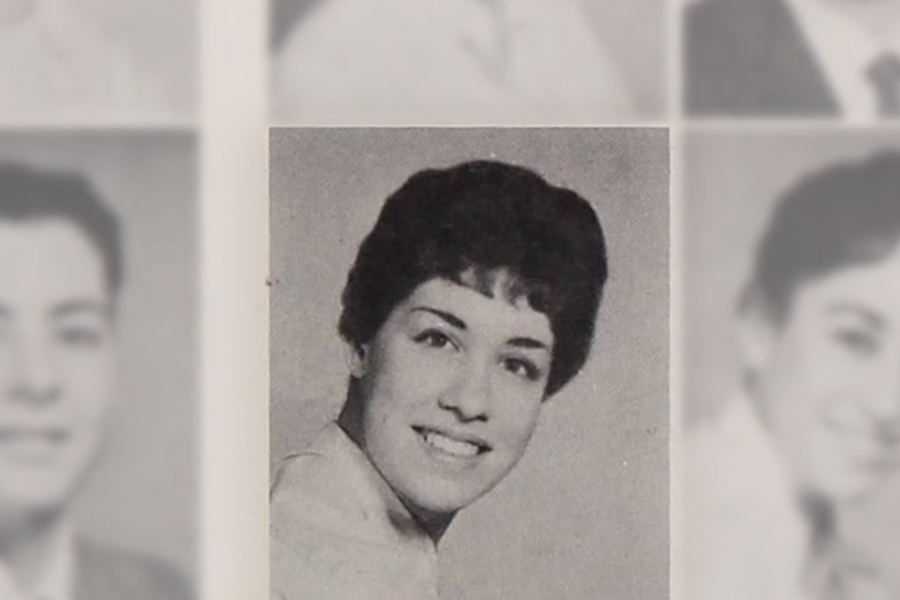
They arranged a meeting. The location was undisclosed. The door opened slowly. A woman stood there, silent, frozen. She stared at the three young men, already knowing who they were.
She welcomed them in. The air was heavy with unspoken history. “This wasn’t a love story,” David said later. “She was a teenager. It was a prom night mistake.”
There was no warm reunion. No fairy tale. Their father had vanished. “She did what she had to do,” Robert said. “But hearing it still hit like a brick.” She chose to remain disconnected from her sons, clueless of another shocking truth.
Advertisement
The Journalist Who Asked Why
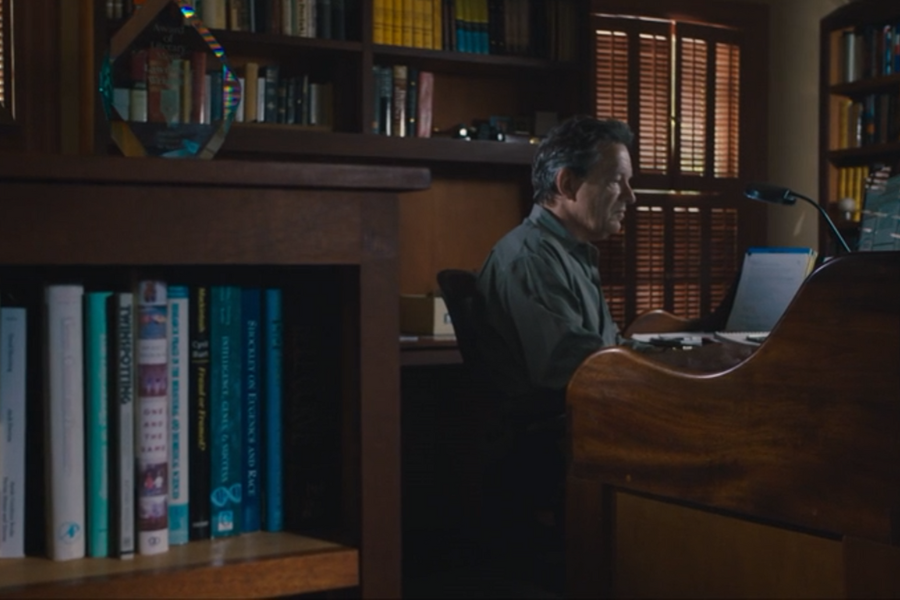
Lawrence Wright, a journalist, had spent years studying separated twins. There were strange overlaps in behavior, eerie coincidences, and one constant: all roads led back to Louise Wise Services in New York.
He kept hearing the same phrases. “They were placed apart.” “It was confidential.” But no one ever explained why. Then Wright found a pattern buried beneath the surface.
“This wasn’t random,” he said. “This was systemic. It had intention.” Every thread tied to one agency. Every case pointed to a deliberate choice. But what were they really hiding?
The Man Behind the Curtain
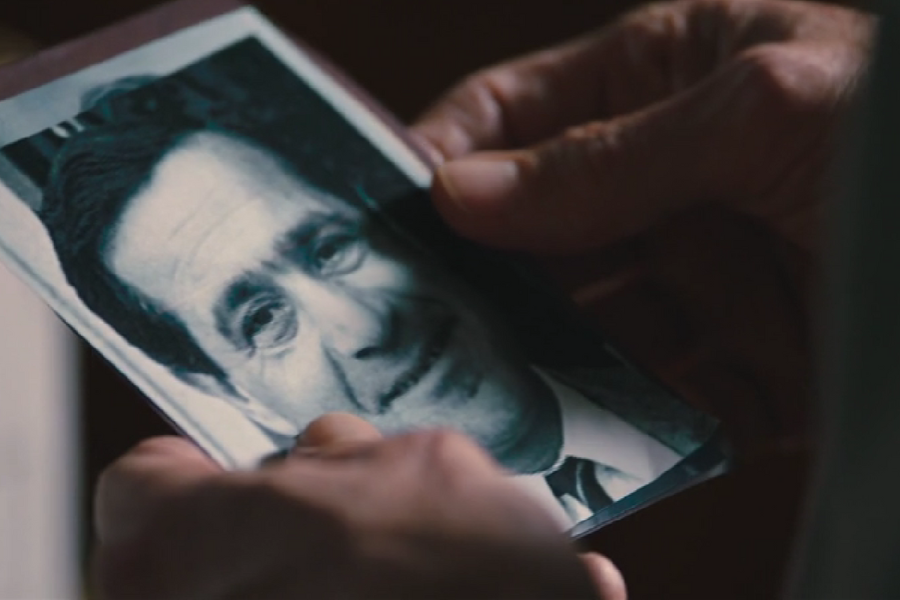
One name emerged repeatedly: Dr. Peter Neubauer, a respected psychiatrist with strict Freudian beliefs. He’d worked closely with Louise Wise Services, pushing boundaries in child development research.
Wright dug deeper. Neubauer had designed a secret study: Separate siblings at birth, place them in different homes, and track their development over decades. There was no consent, no disclosure, just pure experimentation.
“It wasn’t accidental,” Wright said. “It was clinical. It was controlled.” The goal was to measure nature versus nurture, but the subjects were babies. Real children, unaware they were data points, and it gets worse.
Advertisement
We Were Subjects

When the triplets heard Neubauer’s name, it meant nothing—at first. Then Wright explained: “He didn’t just study you. He helped split you. You were participants in his human experiment.”
Each boy was placed into a different home: one working-class, one middle-class, one upper-middle-class. All of them have adopted sisters. The goal? Observe personality differences—analyze them like lab rats in separate cages.
They had been visited for years by strange men with notebooks. Filmed. Measured. Scored. “Every tantrum, every hug—it wasn’t love they saw,” Robert said. “It was data.”
Three Homes. One DNA
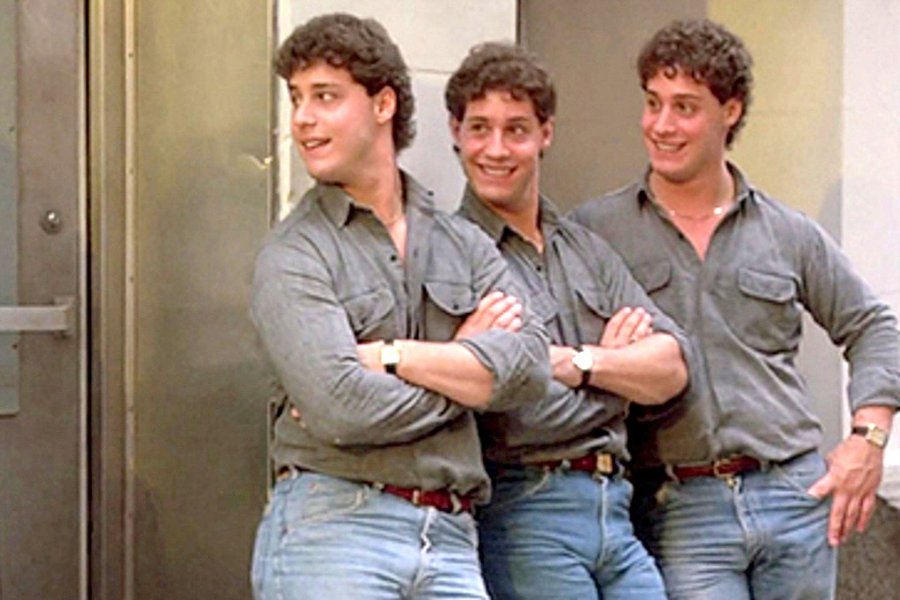
Eddy had to live with a strict and traditionalist father, Bobby with a reserved but gentle doctor, and David with a warm grocery store owner nicknamed “Bubala.”
Eddy’s father was seen as distant—disciplined but emotionally cold. That detachment may have deepened Eddy’s inner struggles. “He needed warmth,” Robert said. “And I don’t think he got it.”
Bobby’s home was quiet, formal. David’s was lively, affectionate. Same genes—different worlds. “We were at the same starting point,” David said. “But the way we were raised shaped everything after that.”
Advertisement
Show Us the Files
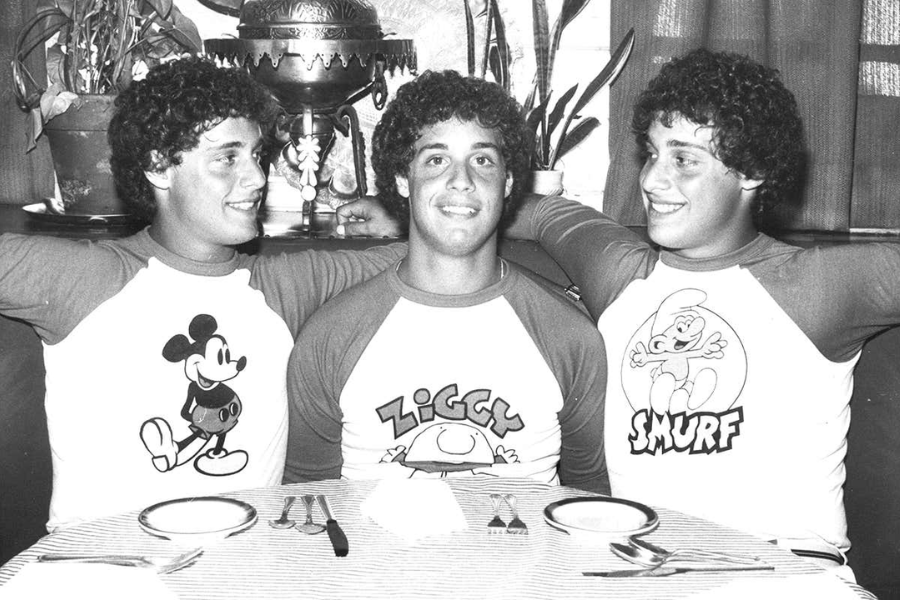
Fueled by rage, the triplets demanded answers. “We want our records,” David said. “Everything you wrote, every tape, every test. If we were studied, we deserve to know!”
The records had been donated to Yale University by Dr. Neubauer. But they were sealed in 1990 — locked away until October 25, 2065. That’s seventy-five years of silence after the files were archived.
“They buried our lives,” Robert said. Pressure mounted. Redacted documents were released—names blacked out, notes missing. “They gave us nothing real,” David said. “It’s garbage!”
We Weren’t the Only Ones
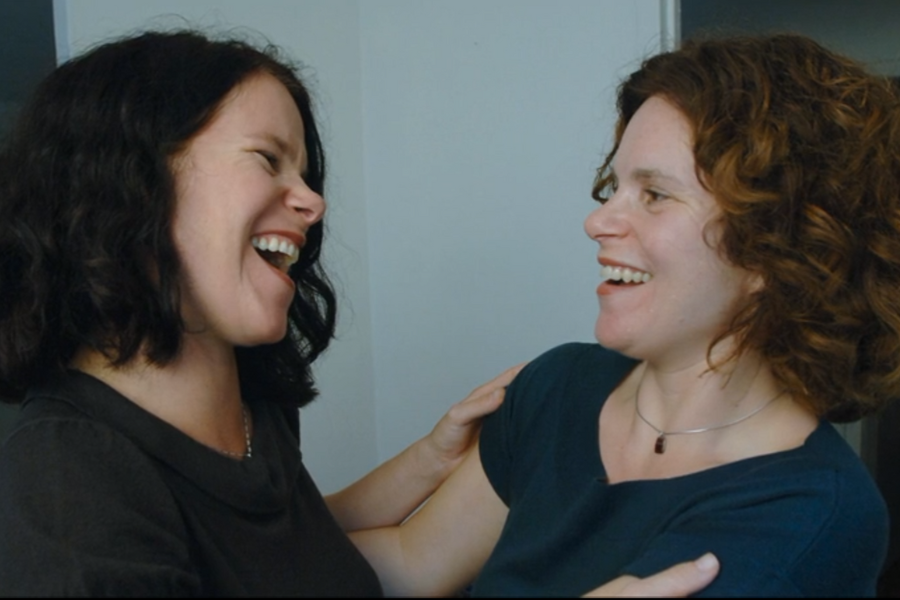
Their story ignited headlines. More adoptees came forward—twins separated, studied, and filmed without explanation. Quiet memories resurfaced—men with notebooks, visits, and questions no one could ever explain.
Two women, Elyse Schlein and Paula Bernstein, learned they were identical twins—separated by Louise Wise Services, raised in different homes, reunited as adults, and another set of lives split apart.
“There were more of us,” David said. “It wasn’t rare. We were just the ones who got seen.” Then, the time came… similarities between the triplets and the twins had resurfaced.
Advertisement
Secrets from the Start
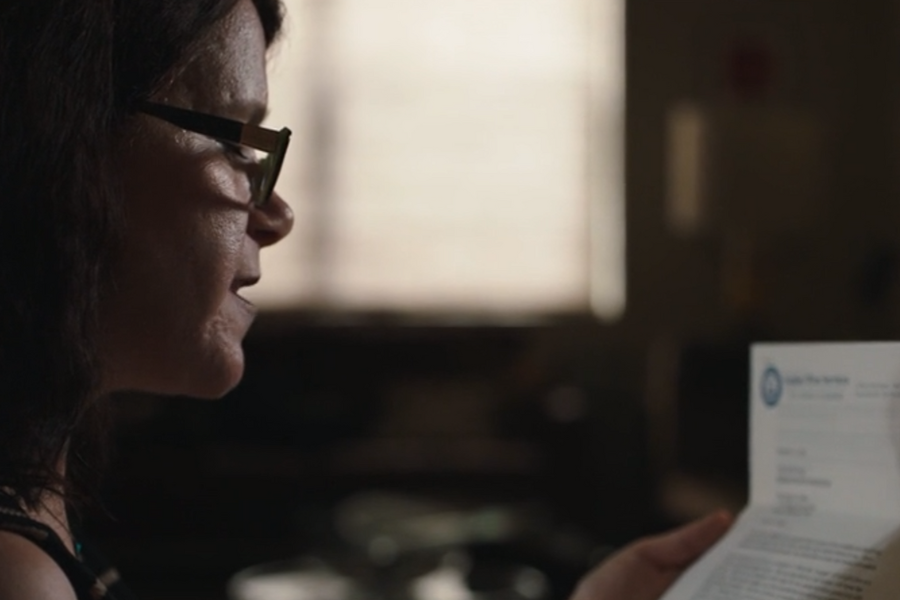
Elyse and Paula, the twins, uncovered a chilling secret. Their biological mother had severe psychiatric illness—long hospital stays, medical records, hidden history. But neither of their adoptive families had been told.
“They hid it,” Paula said. “They knew she was mentally ill—and they gave us no warning.” It wasn’t just about separation. It was about watching what came next.
Both women had battled depression. Elyse asked the unspoken question: “What if this wasn’t just about nurture? What if they were studying whether we’d fall apart like our mother?”
Unspoken Diagnoses
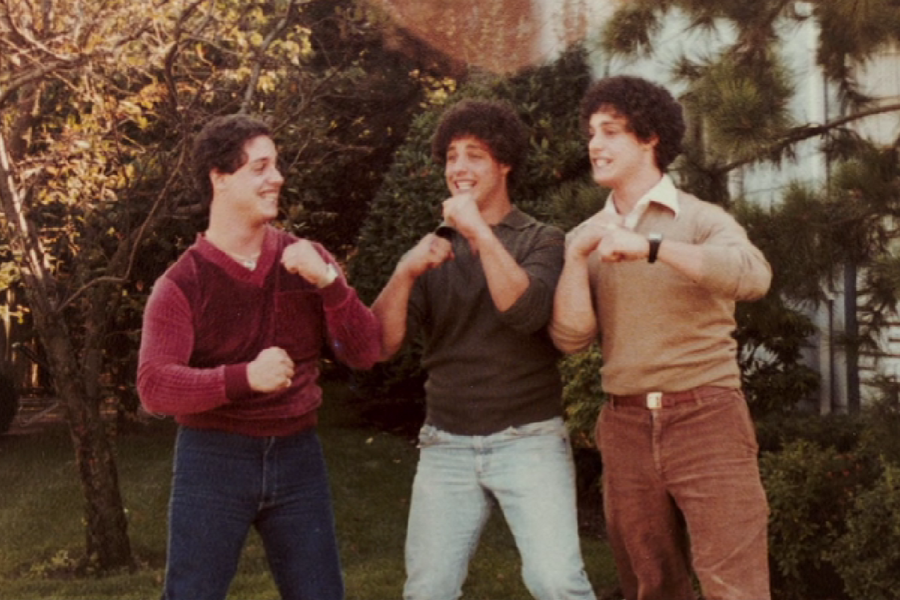
The triplets began connecting more dots after the twins’ discovery. All three had seen psychiatrists as teens—therapy, medication, and emotional struggles. Now they wondered: Was it nature? Did they inherit them from their mom?
David spoke quietly. “She may have had some… issues. More than we were told.” Robert nodded solemnly. “There were signs we never understood—until now.”
No adoptive family had ever been warned. No one mentioned illness. “They tracked it,” David said. “They watched for it. They expected it. But they didn’t warn us—or help us.” The media kept updating the story and later asked the unimaginable question.
Advertisement
The Question in the Crowd
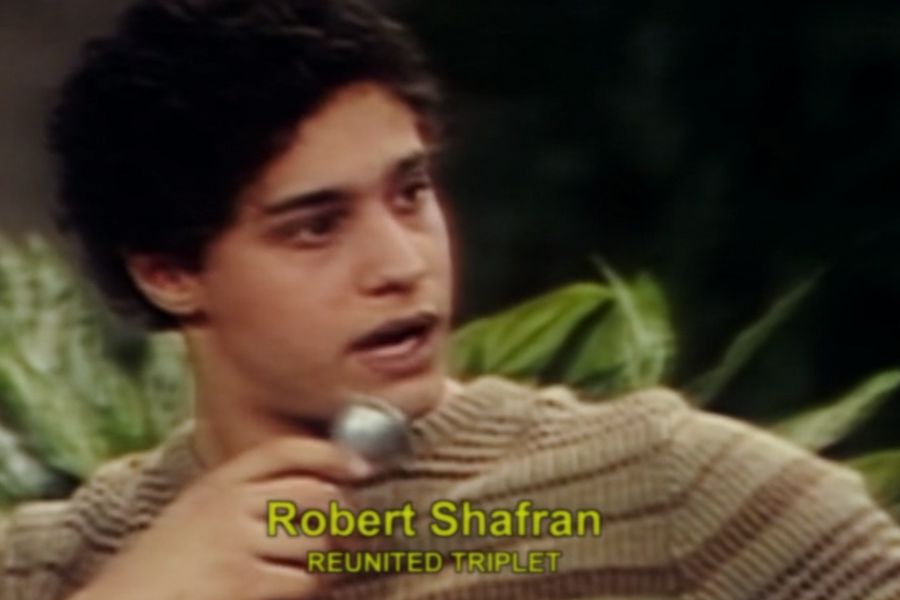
During a talk show taping, the triplets took questions. A woman stood up and asked bluntly, “One of you was involved in a murder, right?” The room went from laughing to dead silent.
Robert took the microphone, composed. “I know what you’re referring to,” he said. “And no—I never met the person who was killed. I wasn’t even there that night.”
He explained: “It was peer pressure. Friends asked me to cover for them. I gave police a story—for them. It backfired. But I’ve never hurt anyone in my life.”
Were We Chosen?
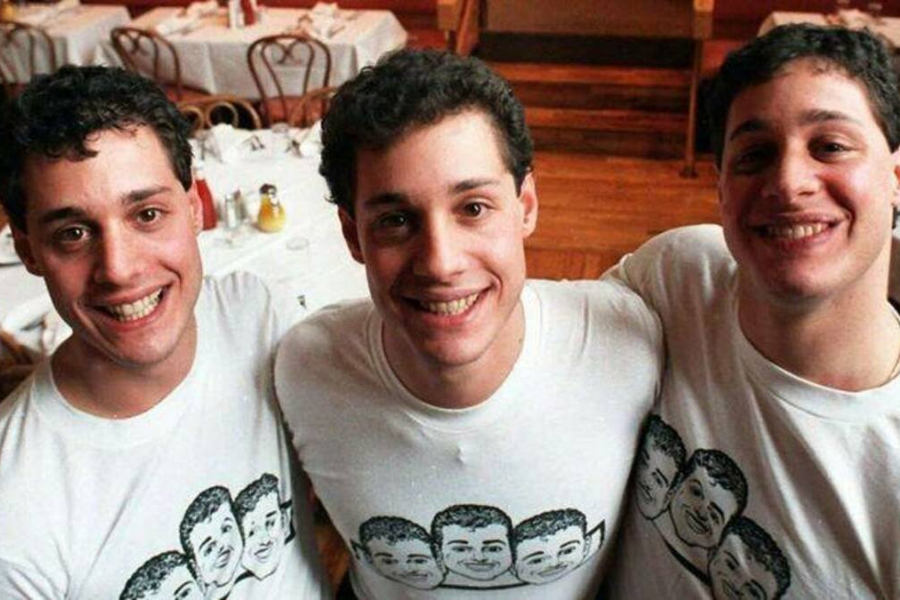
Lawrence Wright posed a darker question. “Were scientists choosing children based on psychiatric histories—specifically, mothers with mental illness?” There was a clear, disturbing pattern forming.
Adoptees separated at birth. Families never warned. Many were later diagnosed with mood disorders, depression, and anxiety. “Is that a factor that he’s researching?” Wright asked.
“We weren’t just studied,” Robert said. “We were selected. Monitored. Measured like lab mice. And maybe—maybe it was always about seeing who would break first.”
Advertisement
Eddy’s Burden
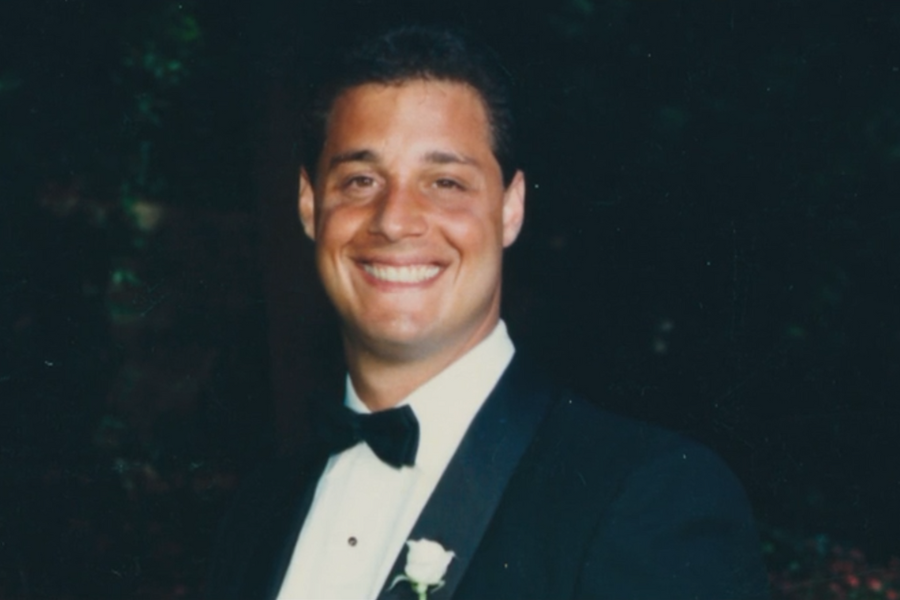
As truth unraveled, Robert and David revisited every memory—especially Eddy’s struggles. “He carried more than we knew,” Robert said. “He smiled through it, but he was in pain.”
All three had fought depression. But Eddy’s battles ran deeper—hospital stays, mood swings, withdrawal from loved ones. “He was the brightest light,” David said, “and the one flickering hardest.”
Knowing now that their biological mother may have suffered the same demons shifted everything. “Maybe Eddy never had a chance,” Robert said. “And it got really worse when I left and Bubala died.”
Cracks in the Mirror

After Bubala passed away, their sweetest father and anchor disappeared. “He was our glue,” Robert said. Without him, things shifted. Silence filled spaces that used to be laughter and comfort.
The restaurant they opened became stressful—more business than brotherhood. Conflicts flared. Robert eventually walked away. “It wasn’t fun anymore,” he said. “It felt like everything was coming undone.”
Eddy took it the hardest. “He was devastated,” David said. “Losing Bubala, then Bobby—it was too much.” That’s when Eddy’s mental health began to spiral—and no one knew how far.
Advertisement
The Call That Broke Everything
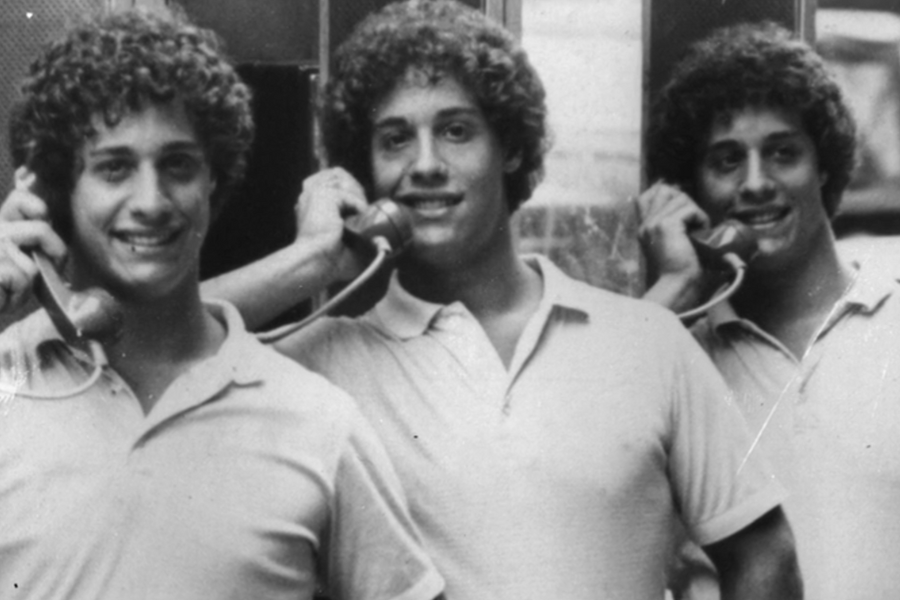
Eddy tried staying involved—returned to work at the restaurant. But one day, David sensed something was wrong. Eddy hadn’t shown up. No call. No word. Just silence.
David asked a family friend to check on him. Minutes later, the phone rang. Her voice trembled. “David,” she said, barely audible. “You need to come home—now.”
He drove fast, panic rising with every block. When he reached the neighborhood, cop cars lined the street. Lights flashed. Officers stood at the curb. Something terrible had happened.
You Don’t Want to See This

David ran toward the porch. “I need to see my brother!” he shouted. But an officer stepped forward, gently placing a hand on his chest. “You don’t want to.”
The words hit like a wall. The officer lowered his voice. “You don’t want to see this,” he said softly. David’s legs nearly gave out. His heart sank.
Eddy had taken his own life. Alone. In his home. He was just 33 years old. “It was like a part of me disappeared,” David said. “Like we lost our center.”
Advertisement
After Eddy
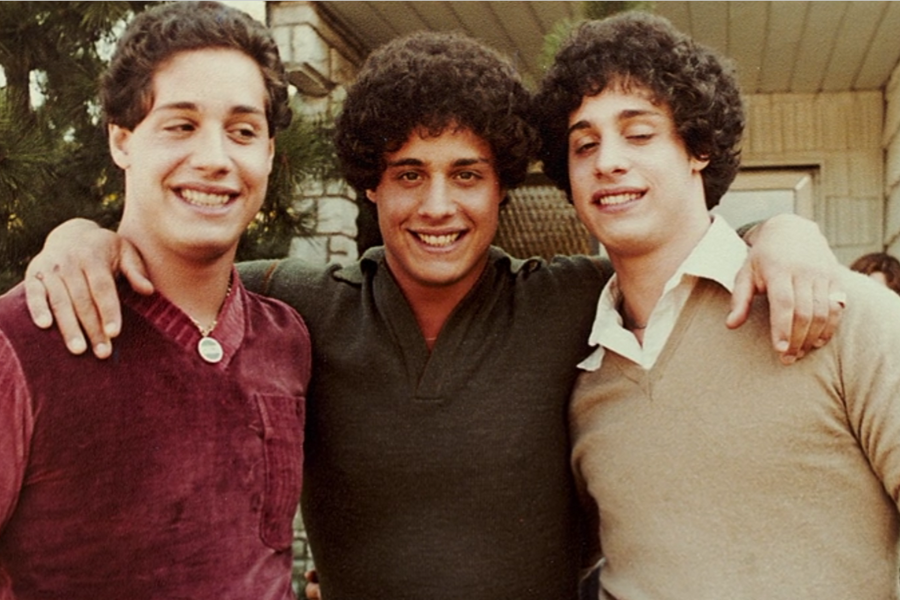
The world fell quiet. Reporters backed off. Cameras vanished. The restaurant lost its magic. “Everything felt dimmer,” Robert said. “Like we lost the color from the world overnight.”
David closed himself off. “I blamed myself,” he admitted. “What if I’d called? What if I’d asked one more question?” Robert carried that guilt, too. It lingered.
But grief turned into resolve. “We had to understand what was done to us,” David said. “It wasn’t just sadness. It wasn’t just chance. It was by design.”
Pages and… Answers?
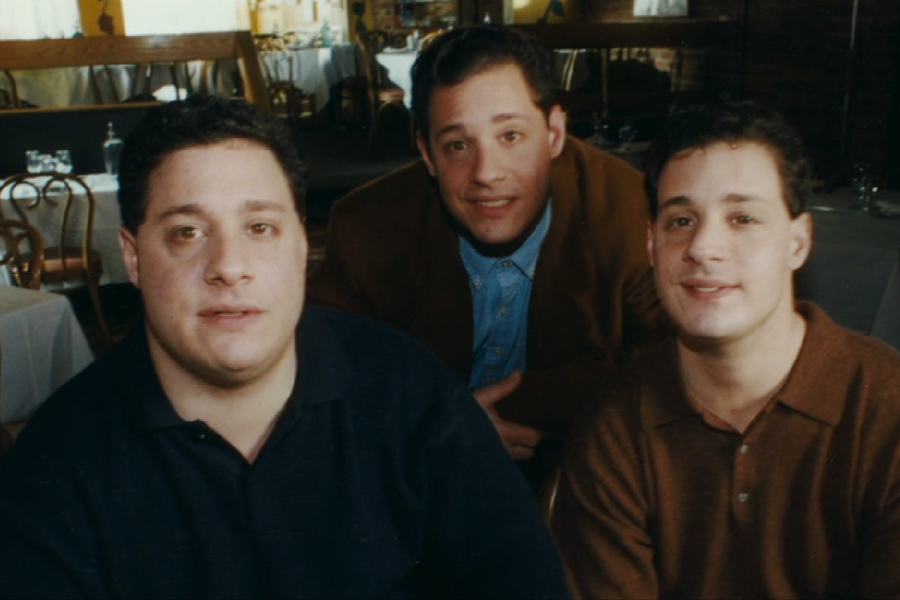
The pressure to unseal records mounted. Eventually, the Jewish Board released over 10,000 pages—case notes, evaluations, memos. They were finally given a window into Neubauer’s classified experiment.
But the window was fogged. “They gave us the middle,” Robert said. “Not the start, not the end. No conclusions. Just years of watching—without ever asking why.”
“There was no apology,” David added. “No responsibility. It’s like reading a book with all the chapters torn out. They didn’t tell our story. They buried it.”
Advertisement
The Question They Never Chose
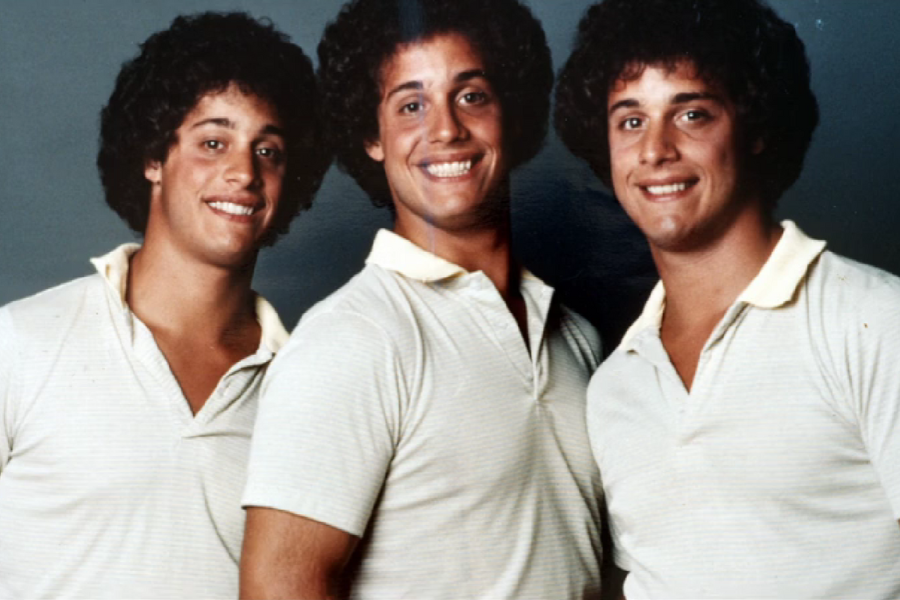
The triplets never volunteered to be part of an experiment. Yet their lives—divided, reshaped, and eventually reunited—became living evidence in one of science’s most enduring debates: Nature or nurture?
What their story uncovered was unsettling. Eddy’s path was darker, more painful. As David reflected, “I’m still here today because of the foundation my parents gave me. That absolutely made a difference.”
They were denied full answers, perhaps forever. But this much is clear: Nature and nurture both matters, but it is nurture that can overcome nearly everything.

